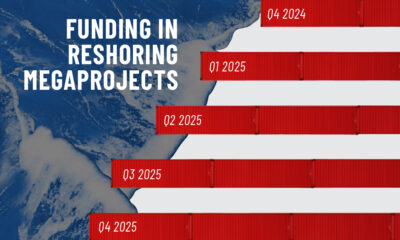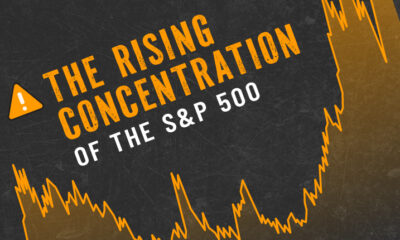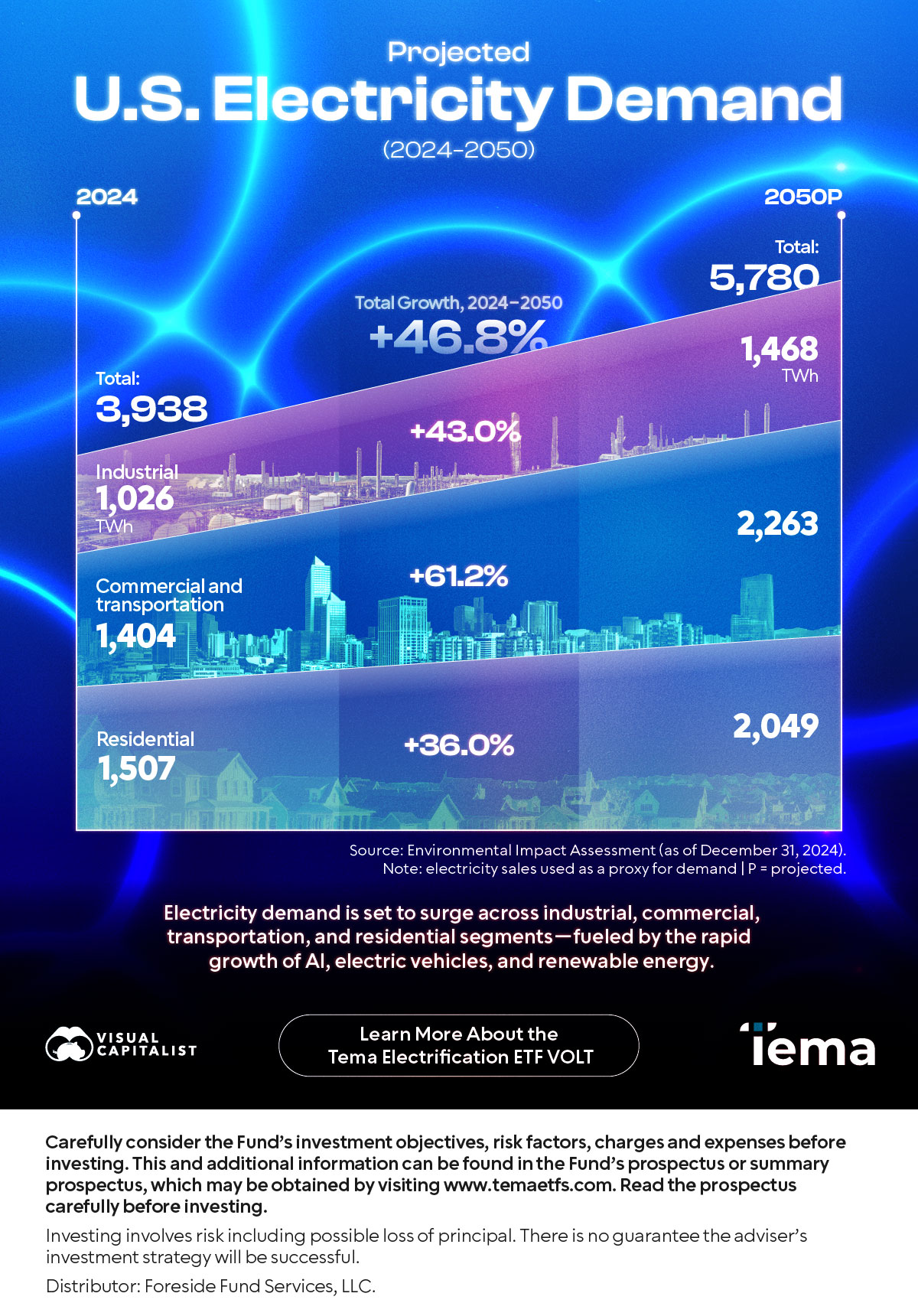U.S. Electricity Demand by Source (2024-2050)
Electricity demand is projected to soar in the coming decades—but by how much and which sectors are driving the surge?
This visualization, created in partnership with Tema ETFs and the first post for VOLTage Week, provides visual context to the projected increase in electricity demand out to 2050. The U.S. Energy Information Administration (EIA) has broken the data down by four main sources.
What Is Electricity?
Electricity is the flow of energy that powers our world. It runs everything from household appliances to industrial machinery and digital systems. Electricity comes from many sources, including fossil fuels, nuclear power, and renewables. A vast grid then delivers it to homes, businesses, and industries.
In the U.S., EIA data shows electricity demand is expected to rise sharply, climbing from 3,938 terawatt-hours (TWh) in 2024 to 5,780 TWh in 2050. This is a near 50% increase as electrification accelerates.
Demand Sources
Four main sources drive electricity demand in the U.S.: residential, commercial, industrial, and transportation. But which ones are fueling the sharpest increases?
All four are projected to grow significantly over the next 25 years. Commercial demand is expected to see the largest jump, rising from 1,397 TWh in 2024 to 2,254 TWh in 2050. This is a 61.3% increase (1.9% annualized). Much of this growth stems from soaring demand at commercial electric vehicle (EV) charging stations.
| Source | 2024 (TWh) | 2050 (TWh) | Growth, 2024-2050 (%) |
|---|---|---|---|
| Residential | 1507 | 2049 | +36.0 |
| Commercial | 1397 | 2254 | +61.3 |
| Industrial | 1026 | 1468 | +43.0 |
| Transportation | 7 | 9 | +32.5 |
| Total | 5342 | 8043 | +46.8 |
The industrial sector comes next, with demand climbing from 1,026 TWh to 1,468 TWh. This is a 43.0% increase (1.4% annualized). This reflects both the electrification of industrial processes and surging demand from data centers.
Meanwhile, residential demand is projected to rise 36.0% (1.2% annualized). Transportation demand is set to grow 32.5% (1.1% annualized) as the shift toward EVs accelerates.
Invest in the Surge
As electricity demand surges across every sector, the energy transition presents a compelling opportunity for investors. Companies enabling electrification—whether through power generation and storage, grid infrastructure, or new technologies—could benefit from this long-term structural growth.
The Tema Electrification ETF (VOLT) invests in the companies powering the future —from energy generation to grid modernization and power management technologies. Electrify your portfolio.

Learn more about VOLT.
Source: U.S. Energy Information Administration (EIA) (as of December 31, 2024)
Carefully consider the Fund’s investment objectives, risk factors, charges and expenses before investing. This and additional information can be found in the Fund’s prospectus or summary prospectus, which may be obtained by visiting www.temaetfs.com. Read the prospectus carefully before investing
Investing involves risk including possible loss of principal. There is no guarantee the adviser’s investment strategy will be successful.
Distributor: Foreside Fund Services, LLC.
-

 Economy2 months ago
Economy2 months agoRanked: U.S. States Gaining the Most Jobs from Reshoring
As the reshoring trend accelerates, millions of manufacturing jobs are returning to American soil. But the benefits aren’t being shared equally across the country.
-

 Economy3 months ago
Economy3 months agoVisualized: Reshoring Investments in the U.S. Have Surged to $1.7T
Reshoring began with supply chain disruptions and sluggish job growth—now it’s gaining momentum with the White House.
-

 Markets4 months ago
Markets4 months agoRanked: 2025’s 10 Largest S&P 500 Stocks
When you invest in S&P 500 stocks, you’re gaining exposure to the 500 biggest publicly traded companies in the U.S.—but not equally.
-

 Economy4 months ago
Economy4 months agoRanked: America’s $425B Trade Deficit by Product
See which goods drive America’s $425B trade deficit—and why they signal key opportunities for U.S. reshoring and domestic investment.
-

 Markets4 months ago
Markets4 months agoVisualized: The Rising Concentration of the S&P 500
By early 2025, the top ten companies in the S&P 500 made up nearly 40%, marking a high degree of market concentration.
-

 Markets4 months ago
Markets4 months agoThe Surging Value of the Magnificent 7 Versus the S&P 500 (2014-2024)
The Magnificent 7 stocks have soared from $1.8T in 2014 to over $18T by 2024—but is their growing dominance making the S&P 500 concentrated?
